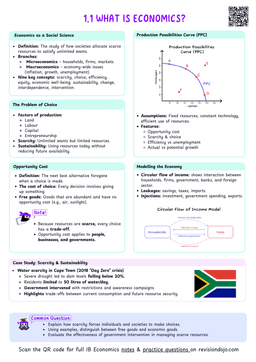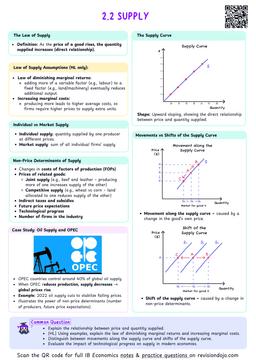Exchange Rate
An exchange rate is the value of one currency in terms of another currency.
- Each country has its own currency, and these currencies are not valid outside their own borders.
- So, when country X wants to pay country Y, it cannot use its own currency directly.
- Instead, it must go to the foreign exchange market, where it exchanges its currency for the currency of country Y, and then uses that currency to complete the payment.
- Imagine a group of friends from the USA planning a trip to France.
- Since the currency in the USA is the US dollar, while in France the currency is the euro, they will need to exchange their dollars for euros in order to carry out transactions during their trip.
Think of it this way:
- A demand for foreign currency creates a supply of domestic currency.
- A demand for domestic currency creates a supply of foreign currency.
Determination of Floating Exchange Rate
Floating Exchange Rate
A floating exchange rate is a system in which the value of a currency is determined by supply and demand, without government intervention.
- To get a better understanding of how market forces determine the floating exchange rates, we can look at the graphical representation of the exchange rates.

- As we can see in the Diagram, there is a market for US dollars.
- On the Y axis the price of USD in terms of euros and on the X axis the quantity of USD
- In the equilibrium, the price of $1$ USD is equivalent to $e_2$ euro.
- If the price of 1 USD suddenly became $e_3$ euros, as there would be a surplus of USD, as there would be more people willing to sell their dollars and buy euros
- If the price of 1 USD became $e_1$ euro, there would be an excess demand for USD, as now people who had euros, would be willing to sell their euro and buy USD.
As the price of USD expressed as euros increases, the quantity supplied of USD also increases.
- A floating exchange rate diagram not only shows the price of dollars in terms of euros, but also the price of euros in terms of dollars.
- When there are only two currencies in the market (dollars and euros):
- The demand curve for dollars is also the supply curve for euros.
- The supply curve for dollars is also the demand curve for euros.
At the equilibrium exchange rate, the price of the currency is determined by the balance of demand and supply.
Appreciation & Depreciation
Appreciation
Appreciation
Appreciation is the increase in the value of a currency.
There can be two causes of currency appreciation.
- Increase in demand
- Decrease in supply
Increase in Demand
- An increase in the demand for a currency means that more people are willing to buy that currency.
- As we know from the previous chapter, an increase in demand results in a rightward shift of the demand curve.

- In the diagram, the initial value of 1 USD in terms of euros is $e_1$.
- An increase in demand shifts the demand curve for USD from $D_1$ to $D_2$, raising the value of USD from $e_1$ to $e_2$.


